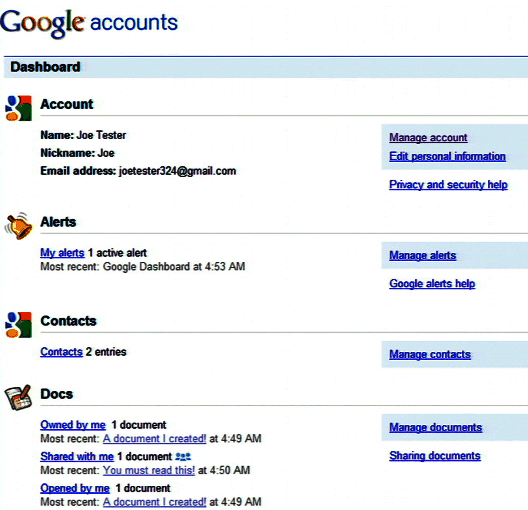Google Dashboard reveals what Google knows about you
Google rolled out its Dashboard service on Thursday which designed to give users quicker access to, and more control over, the personal information stored in Google’s databases.

“Dashboard summarizes data for each product that you use (when signed in to your account) and provides you direct links to control your personal settings, Google said in an official blog.
Google Dashboard - which is designed to address privacy concerns over the search engine giant's propensity to catalogue data - is accessed by logging into a Google account.
Currently, it covers more than 20 Google products and services right now, such as Gmail, Calendar, Docs, Web History, Orkut, YouTube, Picasa, Talk, Reader, Alerts, Latitude, Profile, Web History and more.
Google said the user can edit the information, by deleting the products history if the user does not want Google to keep track of them.
“We recognize how important our users’ trust is, so we’re looking for ways to be more transparent,” says Shuman Ghosemajumder, Google’s Business Product Manager for Trust & Safety. “Over the last 11 years we’ve launched a lot of products, so we wanted to provide more transparency for people using those products.”
Although the Dashboard service shows the public a bit about how much Google knows about our lives online, it still doesn't provide many answers as to how Google uses this information.
According to Google's privacy policy, the tech giant says it keeps users personal information in order to provide you with a better experience and to improve the quality of our services. It's unclear how Google enforces this policy.
All in all, Google Dashboard holds a lot of potentially sensitive data, giving users yet another good reason to have strong passwords on their Gmail or other Google accounts.
Google Dashboard is now available at http://www.google.com/dashboard.
Watch a Google Dashboard walkthrough video below:
© Copyright IBTimes 2025. All rights reserved.




















